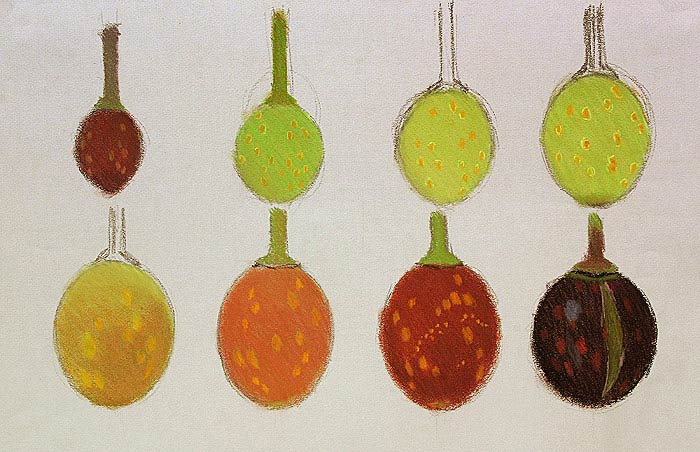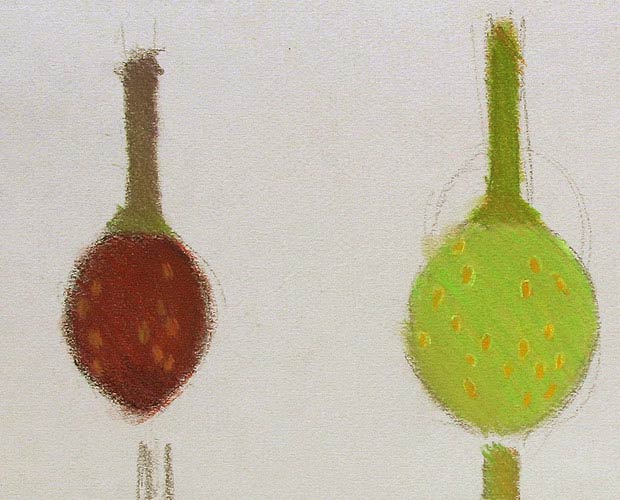
| Prev | Gallery 3 - One Moreton Bay Fig Tree Project |
More Details | Home Page Menu / Back To Gallery Page

50 cm (w) x 35 cm (h), pastels on acid-free paper.Drawn on-site directly from collected samples of the tree’s fruit, assumed to be at various stages of development. The ‘odd’ specimen seems to be the first sample shown, the small red fruit. Many of these smaller fruits, along with the larger fruit similar to the last image shown in the drawing are typical of the fruit found on the ground. The other stages are found (developing) on the branches. I can see/understand a development of the fruit based on the last 7 images shown here, with the fruit increasing in size, and changing colours as it matures, but where does the first type fit in? At some times of the year, these easily outnumber the other fruit found on the ground. I assume these are ‘fruits’ that have missed out on a crucial event for proper development, and instead are prematurely ripened and dropped from the tree. The other fruit stays on the branches, slowly getting larger and developing ‘normally’. After doing some research on Moreton Bay Fig trees, it appears as though each species of Moreton Bay Fig tree is linked with special species of tiny wasps. Apparently the fruit is actually more like a container for internal flowers that are fertilized by the tiny wasps. The wasps need to bury themselves inside the fruit at the right time of the fruit’s development for development to take place properly. Looking back at my times under the tree, I know that I have sometimes been surprised by the number of small black insects that were around. They were very thin, about 3 or 4 mm in length. Perhaps these were some of the wasps that were required for the fruit to mature. Pastels worked well for recording the colours, because they don’t change colour as they are applied, and I could easily colour match between my results and the actual fruit. |



More Details | Home Page Menu / Back To Gallery Page
| Prev | Gallery 3 - One Moreton Bay Fig Tree Project |